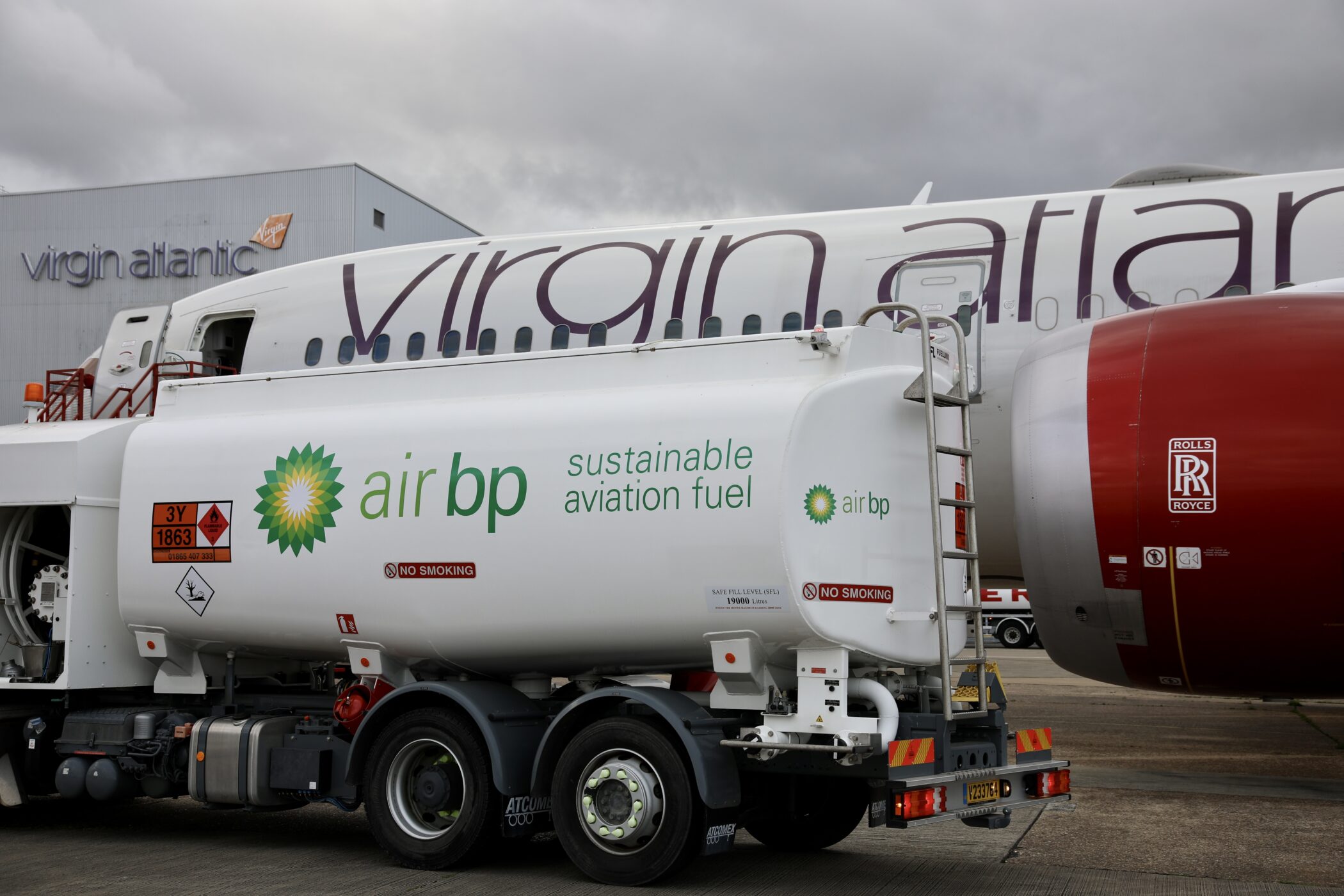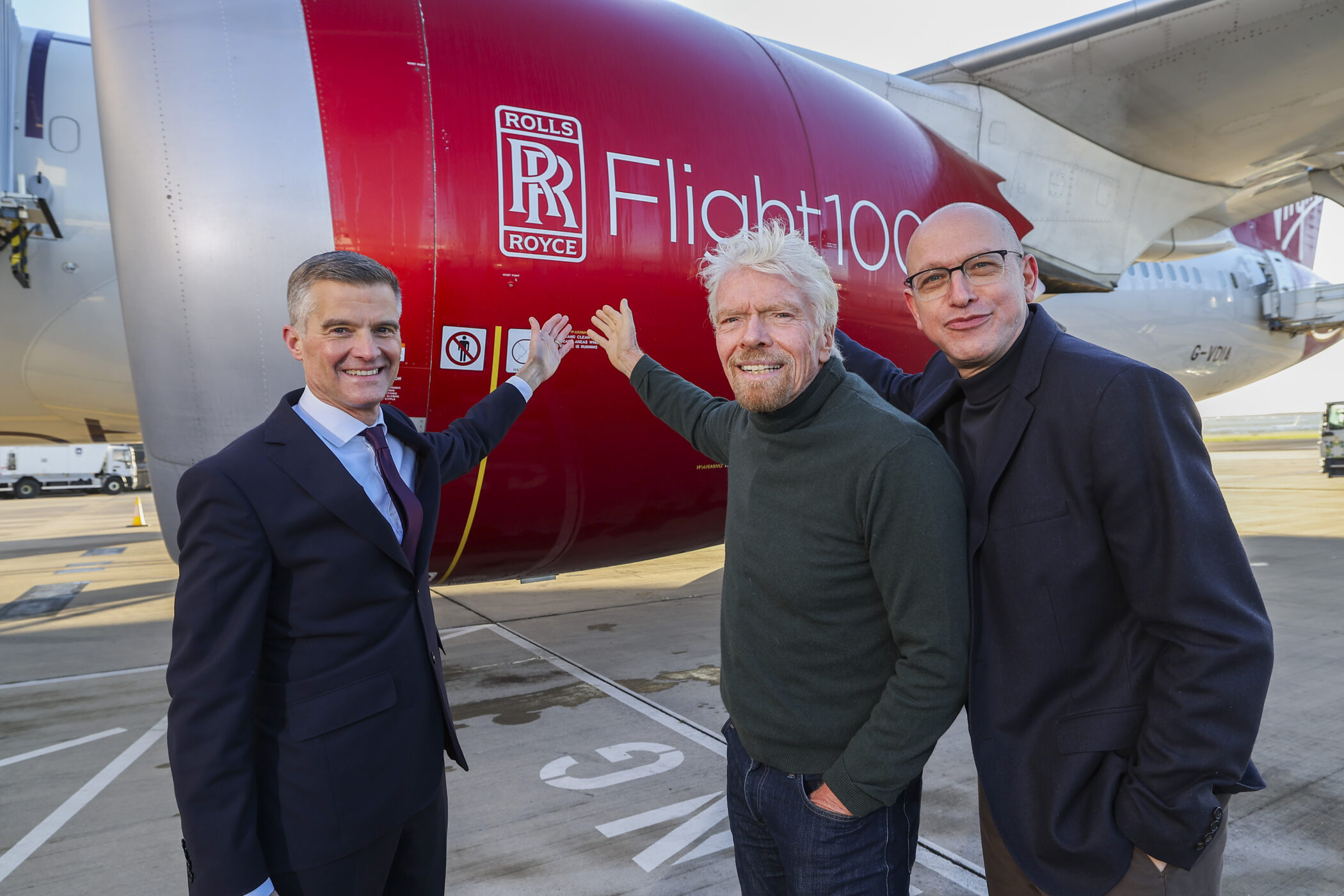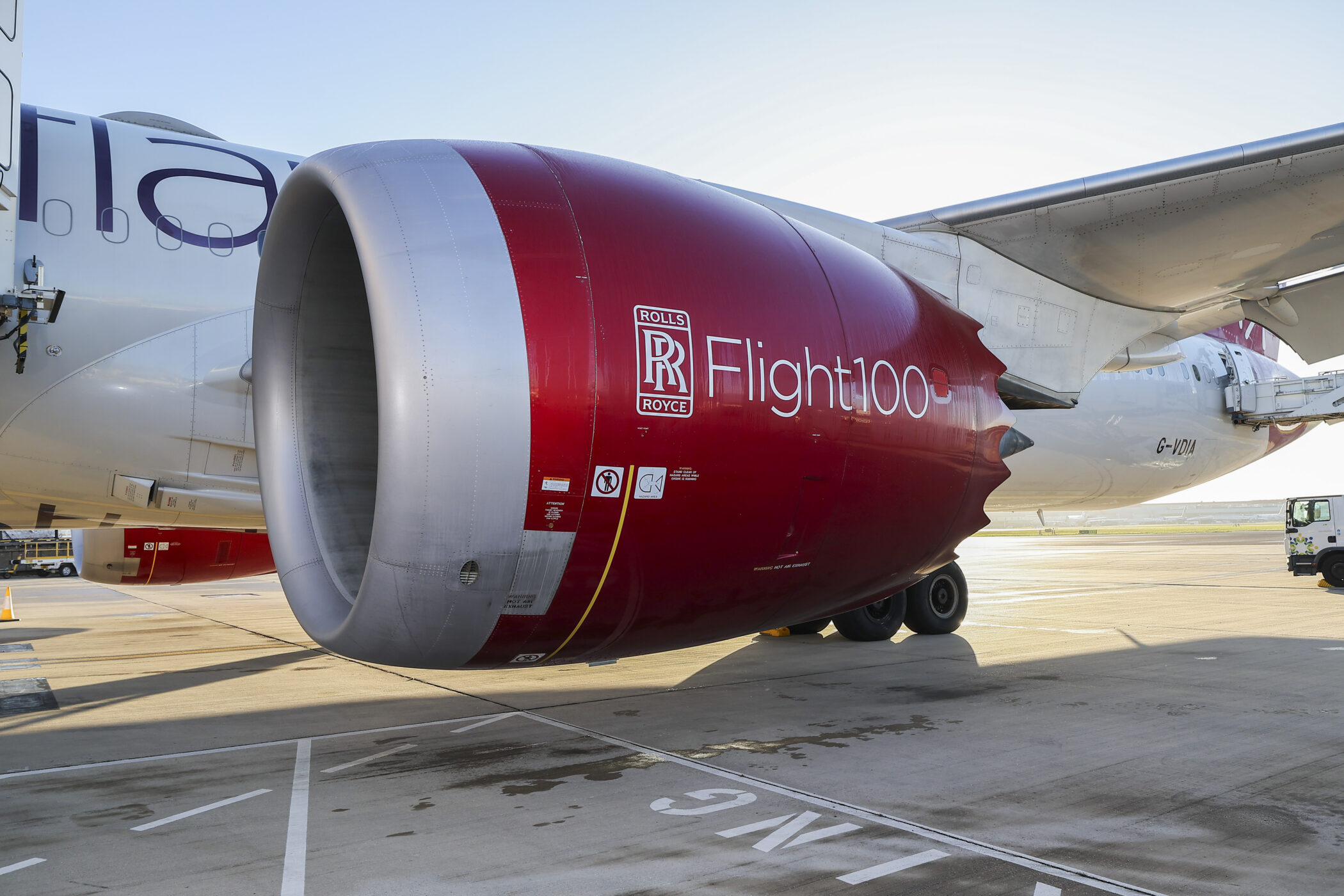Virgin Atlantic has operated the world’s first commercial transatlantic flight entirely powered by sustainable aviation fuel, with a far lower carbon footprint than traditional jet fuel. Jenny Southan reports
On November 28, Virgin Atlantic “Flight100” flew from London Heathrow to New York JFK with the B787’s Rolls-Royce Trent 1,000 engines powered not by fossil fuel but energy derived from waste fats and plant sugars.
Dubbed “sustainable aviation fuel” or SAF, the flight was a milestone event because up until now no commercial airline has flown entirely on SAF – the fuel has always had to be mixed with conventional fuel. (Read about how SAF is being used on Victor private jets.)
Earlier in November, Emirates operated an A380 demonstration flight using 100 per cent SAF in one its of four engines. The Virgin Atlantic flight had dozens of (non-paying) passengers onboard including founder Richard Branson himself. The flight proved that SAF is a “safe drop-in replacement for fossil-derived jet fuel and the only mid-term viable solution for decarbonising long haul aviation,” says the airline.
The Virgin Atlantic flight had dozens of (non-paying) passengers onboard including founder Richard Branson himself. The flight proved that SAF is a “safe drop-in replacement for fossil-derived jet fuel and the only mid-term viable solution for decarbonising long haul aviation,” says the airline.
Branson says: “The world will always assume something can’t be done, until you do it. The spirit of innovation is getting out there and trying to prove that we can do things better for everyone’s benefit.
“Virgin Atlantic has been challenging the status quo and pushing the aviation industry to never settle and do better since 1984. Fast forward nearly 40 years, that pioneering spirit continues to be Virgin Atlantic’s beating heart as it pushes the boundaries from carbon fibre aircraft and fleet upgrades to sustainable fuels.
“I couldn’t be prouder to be onboard Flight100 today alongside the teams at Virgin Atlantic and our partners, which have been working together to set the flight path for the decarbonisation of long-haul aviation.”
SAF has a significant role to play in the decarbonisation of long haul aviation, and pathway to Net Zero 2050. The fuel, made from waste products, delivers CO2 “lifecycle emissions” savings of up to 70 per cent, whilst performing like the traditional jet fuel it replaces.
(For clarity, the emissions from the London-New York flight are the same as any other flight but the fuel itself has a lower carbon footprint due to how it is created and the ingredients it uses as an alternative to fossil fuel.)

While other technologies such as electric and hydrogen remain decades away, SAF can be used now. However, today, SAF represents less than 0.1% of global jet fuel volumes and fuel standards allow for just a 50% SAF blend in commercial jet engines. Shai Weiss, Chief Executive Officer, Virgin Atlantic, says: “Flight100 proves that Sustainable Aviation Fuel can be used as a safe, drop-in replacement for fossil-derived jet fuel and it’s the only viable solution for decarbonising long haul aviation. It’s taken radical collaboration to get here and we’re proud to have reached this important milestone, but we need to push further.
Shai Weiss, Chief Executive Officer, Virgin Atlantic, says: “Flight100 proves that Sustainable Aviation Fuel can be used as a safe, drop-in replacement for fossil-derived jet fuel and it’s the only viable solution for decarbonising long haul aviation. It’s taken radical collaboration to get here and we’re proud to have reached this important milestone, but we need to push further.
“There’s simply not enough SAF and it’s clear that in order to reach production at scale, we need to see significantly more investment. This will only happen when regulatory certainty and price support mechanisms, backed by Government, are in place. Flight100 proves that if you make it, we’ll fly it.”
Flight100 proves that the challenge of scaling up production is one of policy and investment, and industry and government must move quickly to create a thriving UK SAF industry. It will also help experts assess how its use affects the flight’s non-carbon emissions.
The research will improve scientific understanding of the effects of SAF on contrails and particulates and help to implement contrail forecasts in the flight planning process.
The SAF flight was made possible by a year of “radical collaboration” by a Virgin Atlantic-led consortium, including Boeing, Rolls-Royce, Imperial College London, University of Sheffield, ICF and Rocky Mountain Institute, in partnership with Department for Transport.
Virgin Atlantic says it is committed to finding more sustainable ways to fly, taking action across every part of the journey. Already operating one of the youngest and most fuel and carbon efficient fleets in the sky, Flight100 builds on the airline’s 15-year track record for leading on the development of SAF at scale.
Collectively, industry and government must go further, to create a UK SAF industry and meet aviation’s commitment to using at least 10% SAF to power commercial flights by 2030. UK transport secretary Mark Harper says: “Today’s historic flight, powered by 100% sustainable aviation fuel, shows how we can both decarbonise transport and enable passengers to keep flying when and where they want.
UK transport secretary Mark Harper says: “Today’s historic flight, powered by 100% sustainable aviation fuel, shows how we can both decarbonise transport and enable passengers to keep flying when and where they want.
“This Government has backed today’s flight to take-off and we will continue to support the UK’s emerging SAF industry as it creates jobs, grows the economy and gets us to Jet Zero.”
Sheila Remes, vice-president of environmental sustainability for Boeing, says: “In 2008 Virgin Atlantic and Boeing completed the first commercial SAF test flight on a 747 and today we will accomplish yet another significant milestone utilising a 787 Dreamliner.
“This flight is a key step toward our commitment to deliver 100% SAF-compatible airplanes by 2030. As we work toward the civil aviation industry’s net-zero goal, today’s historic journey highlights what we can achieve together.”
Simon Burr, group director of engineering, technology and safety for Rolls-Royce plc, says: “Rolls-Royce has recently completed compatibility testing of 100% SAF on all our in-production civil aero engine types and this is further proof that there are no engine technology barriers to the use of 100% SAF. The flight represents a major milestone for the entire aviation industry in its journey towards net zero carbon emissions.”
The SAF used on Flight100 is a unique dual blend; 88% HEFA (Hydroprocessed Esters and Fatty Acids) supplied by AirBP and 12% SAK (Synthetic Aromatic Kerosene) supplied by Virent, a subsidiary of Marathon Petroleum Corporation.
The HEFA is made from waste fats while the SAK is made from plant sugars, with the remainder of plant proteins, oil and fibres continuing into the food chain. SAK is needed in 100% SAF blends to give the fuel the required aromatics for engine function.
To achieve Net Zero 2050, the innovation and investment needed across all available feedstocks and technologies must be harnessed to maximise SAF volumes as well as continuing the research and development needed to bring new zero emission aircraft to market.

